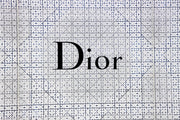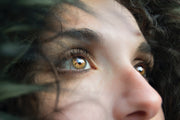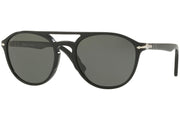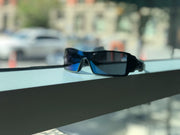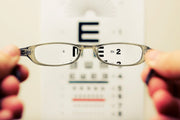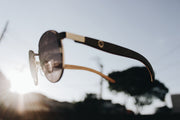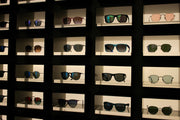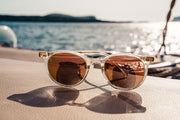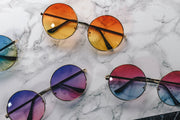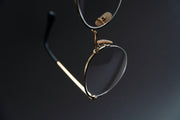Light transmission is a critical factor to consider when purchasing sunglasses. It refers to the amount of visible light that can pass through the lenses. This is measured as a percentage and is often listed in the product specifications. The lower the percentage, the darker the lenses are, and the less light that is allowed to pass through.
Sunglasses with a high light transmission percentage are ideal for low-light conditions, such as cloudy days. On the other hand, sunglasses with a low light transmission percentage are best for bright, sunny days. It is important to note that the darkness of the lenses does not necessarily indicate the level of UV protection they provide. Therefore, checking the product specifications for information on the sunglasses' UV protection capabilities is crucial.
When shopping for sunglasses, understanding light transmission is essential to finding the right pair. The percentage of light transmission can significantly impact the sunglasses' effectiveness in different lighting conditions. By considering this factor, along with other essential features such as UV protection, lens color, and material, you can make an informed decision and find a pair of sunglasses that best suits your needs.
What is Light Transmission in Sunglasses?
Regarding sunglasses, light transmission refers to the amount of visible light that can pass through the lenses. It is typically measured as a percentage, indicating how much light the sunglasses block. The lower the percentage, the darker the lenses will be.
Sunglasses with a high level of light transmission are ideal for low-light conditions, such as cloudy or overcast days. They allow more light to pass through the lenses, which can help improve visibility. On the other hand, sunglasses with a low-light transmission are better suited for bright, sunny days. They block more light, which can help reduce glare and eye strain.
Most sunglasses have a light transmission of anywhere from 10% to 60%. However, some specialty lenses may have a light transmission as low as 1% or as high as 90%. The exact level of light transmission that is best for you will depend on a variety of factors, including your personal preferences, the conditions in which you will be wearing the sunglasses, and the activities you will be doing while wearing them.
It's important to note that light transmission is not the same as UV protection. While sunglasses with a darker tint may block more visible light, they may not necessarily provide better protection against harmful UV rays. Always look for sunglasses that offer 100% UV protection to help keep your eyes safe from the sun's damaging rays.
Why is Light Transmission Important?
Light transmission is essential when choosing sunglasses because it impacts how much light enters your eyes. The amount of light transmission is expressed as a percentage of the total light that hits the lens. A higher percentage means more light passes through, while a lower percentage means less.
The level of light transmission affects how well you can see in different lighting conditions. For example, sunglasses with a high level of light transmission may not provide enough protection in bright sunlight, while those with a low level of light transmission may be too dark for cloudy days or indoor use.
Moreover, the level of light transmission also affects the amount of UV radiation that reaches your eyes. Sunglasses with a higher level of light transmission may not provide adequate protection against harmful UV rays, which can lead to eye damage and vision problems.
Therefore, choosing sunglasses with the appropriate level of light transmission for your needs is crucial. A good rule of thumb is to select sunglasses with a light transmission level between 10% and 30% for bright sunlight and outdoor activities. For indoor use or cloudy days, a higher level of light transmission, around 50%, maybe more appropriate.
In conclusion, light transmission is a crucial factor to consider when choosing sunglasses. It affects how well you can see in different lighting conditions and how much UV radiation reaches your eyes. By selecting sunglasses with the appropriate level of light transmission, you can protect your eyes and enjoy clear vision in all situations.
Factors Affecting Light Transmission in Sunglasses
The amount of light that passes through a lens is known as light transmission. It is important to consider when choosing sunglasses as it affects how much light enters the eyes and how well you can see in different lighting conditions. Here are some of the factors that affect light transmission in sunglasses:
Lens Color and Tint
The color and tint of the lens can affect the amount of light that passes through. Darker lenses will have lower light transmission, while lighter lenses will have higher light transmission. For example, gray lenses have a low light transmission, making them ideal for bright, sunny days. On the other hand, yellow lenses have a high light transmission, making them suitable for low-light conditions.
Polarization
Polarized lenses are designed to reduce glare and improve visibility in bright conditions. They block light waves reflected off water, snow, and pavement surfaces. Polarized lenses have a lower light transmission compared to non-polarized lenses.
Lens Material
The material used to make the lens can affect light transmission. Glass lenses have a lower light transmission than plastic lenses. However, glass lenses are more scratch-resistant and offer better optical clarity than plastic lenses.
Coatings
Coatings can be applied to lenses to reduce glare, improve clarity, and increase durability. Anti-reflective coatings reduce glare and improve visibility, while scratch-resistant coatings protect the lens from scratches. These coatings can affect light transmission, so it's important to consider them when choosing sunglasses.
Visible Light Transmission (VLT)
Visible light transmission (VLT) measures how much visible light passes through the lens. Sunglasses with a high VLT are suitable for low-light conditions, while sunglasses with a low VLT are ideal for bright, sunny days.
In conclusion, several factors affect light transmission in sunglasses. It's important to consider these factors when choosing sunglasses to ensure that you have the right level of light transmission for the lighting conditions you'll be in.
How to Measure Light Transmission in Sunglasses
Measuring light transmission in sunglasses is important to determine how much light can pass through the lenses. This measurement is expressed as a percentage called Visible Light Transmission (VLT). The higher the VLT percentage, the more light can pass through the lenses, and vice versa.
There are different methods to measure VLT, but the most common is using a spectrophotometer. This device measures the amount of light that passes through the lenses at different wavelengths and then calculates the VLT percentage based on the total amount of light that hits the lenses.
Another way to estimate VLT is using a VLT meter. This device measures the light that passes through the lenses and displays the VLT percentage on a screen. However, VLT meters may not be as accurate as spectrophotometers, and their readings may vary depending on the angle of incidence, the type of light source, and other factors.
It's important to note that VLT measurements may vary depending on the lenses' color, material, and thickness, as well as the coatings and treatments applied to them. For example, polarized lenses may have a lower VLT percentage than non-polarized lenses, as they block more glare and reflected light.
To ensure that your sunglasses provide adequate protection and comfort, it's recommended to choose lenses with a VLT percentage that suits your needs and activities. For example, if you use your sunglasses for outdoor sports, you may want to choose lenses with a lower VLT percentage to reduce glare and bright light. On the other hand, if you're going to use your sunglasses for driving or indoor activities, you may want to choose lenses with a higher VLT percentage to maintain good visibility.
In summary, measuring light transmission in sunglasses is crucial to ensure that your lenses provide the right balance of protection and visibility. By understanding how VLT works and how to measure it, you can make informed decisions when choosing your sunglasses and enjoy clear, comfortable vision in any situation.
Types of Sunglasses Based on Light Transmission
Sunglasses come in different types based on their light transmission capabilities. Light transmission refers to the amount of light that can pass through sunglasses' lenses. The amount of light transmission can affect the clarity of vision and the level of eye protection the sunglasses offer. Here are some common types of sunglasses based on light transmission:
Dark Sunglasses
Dark sunglasses have a low level of light transmission, typically between 3% and 10%. They are ideal for bright and sunny conditions, such as at the beach or skiing on a sunny day. Dark sunglasses can help reduce glare and eye strain. However, they may not be suitable for low-light conditions, such as driving at night.
Polarized Sunglasses
Polarized sunglasses have a special filter that can block out horizontal light waves, which can cause glare. They have a light transmission of around 10% to 20%. Polarized sunglasses can be great for fishing, boating, and driving, as they can help improve visibility and reduce eye strain. However, they may not be suitable for certain activities, such as skiing, as they may make it difficult to see ice patches.
Photochromic Sunglasses
Photochromic sunglasses have lenses that can darken or lighten based on the amount of UV radiation they receive. They have a light transmission range of around 10% to 80%. Photochromic sunglasses can be great for activities that involve going in and out of different lighting conditions, such as hiking or cycling. However, they may not be suitable for activities requiring consistent lighting, such as skiing.
Mirrored Sunglasses
Mirrored sunglasses have a reflective coating on the lenses that can help reduce the amount of light that can pass through the lenses. They have a light transmission range of around 10% to 60%. Mirrored sunglasses can be great for activities such as skiing or snowboarding, as they can help reduce glare from the snow. However, they may not be suitable for low-light conditions, such as driving at night.
In summary, different sunglasses have different light transmission capabilities, which can affect the level of eye protection and clarity of vision they offer. It's important to choose sunglasses that are suitable for the activities you'll be doing and the lighting conditions you'll be in.
Conclusion
In conclusion, light transmission is important when purchasing sunglasses. It refers to the amount of light that can pass through the lenses and is measured as a percentage. The lower the percentage, the darker the lenses will be. This means that sunglasses with a lower light transmission are better suited for bright and sunny conditions, while those with higher light transmission are better for low-light conditions.
When choosing sunglasses, it is important to consider your specific needs. If you plan to wear them in bright and sunny conditions, you may want to opt for lenses with lower light transmission (around 10-20%). On the other hand, if you plan to wear them in low-light conditions, you may opt for lenses with higher light transmission (around 50-70%).
It is also important to consider the activities you will be doing while wearing your sunglasses. For example, if you plan to wear them while driving, you may want to opt for lenses with medium light transmission (around 20-40%) to ensure that you have enough visibility.
Overall, understanding light transmission can help you choose the right pair of sunglasses for your specific needs. By considering factors such as the amount of light, you will be exposed to and the activities you will be doing while wearing your sunglasses, you can ensure that you choose a pair that provides the right level of protection and visibility.


